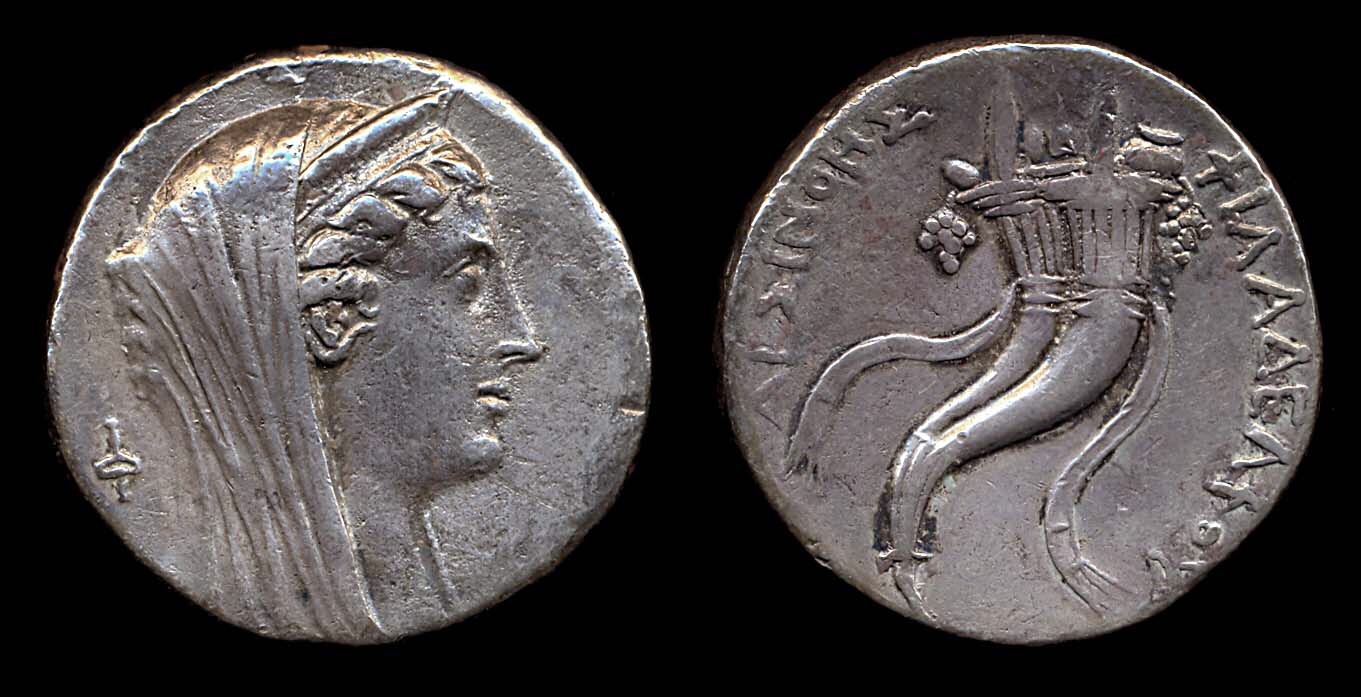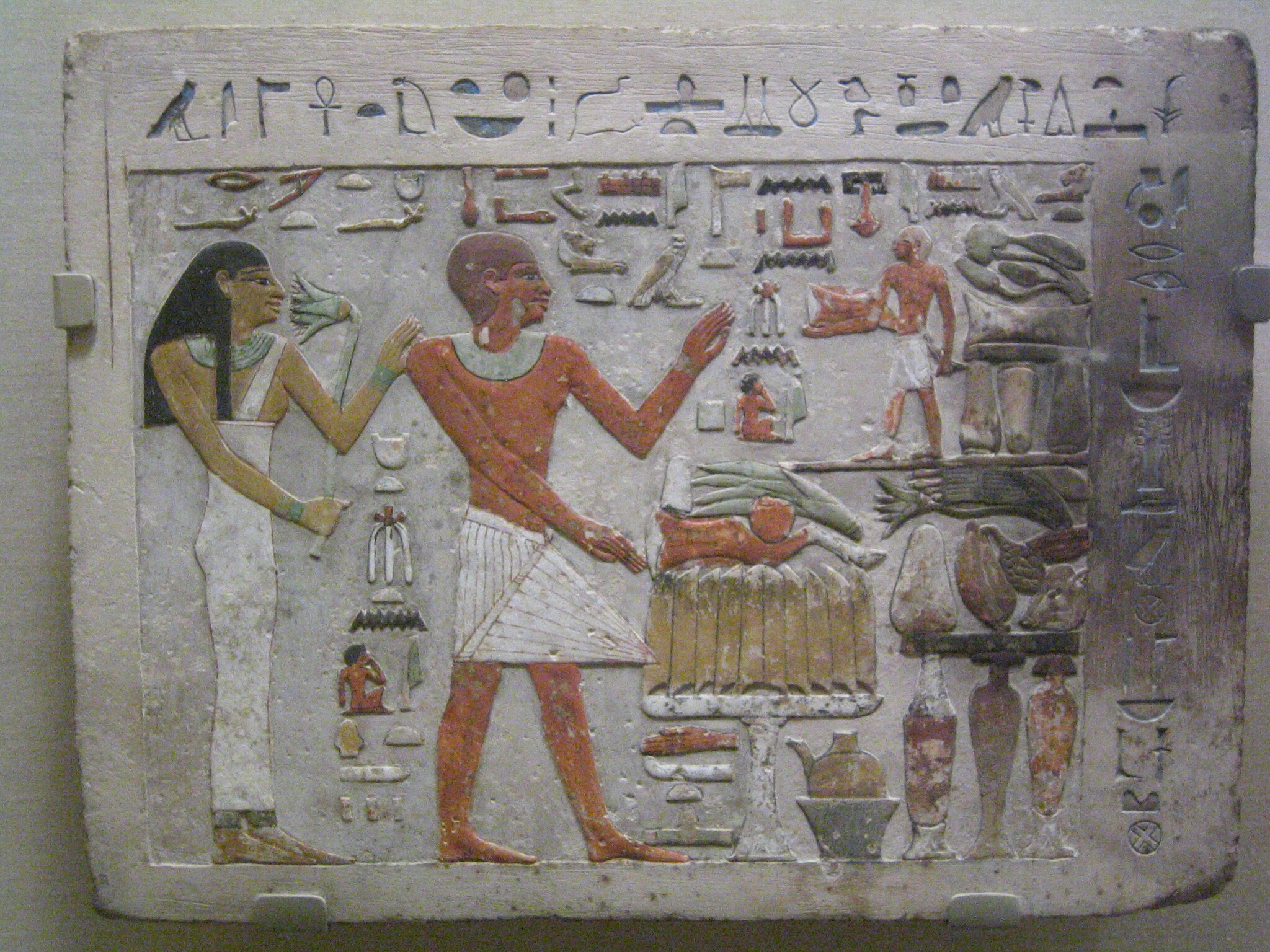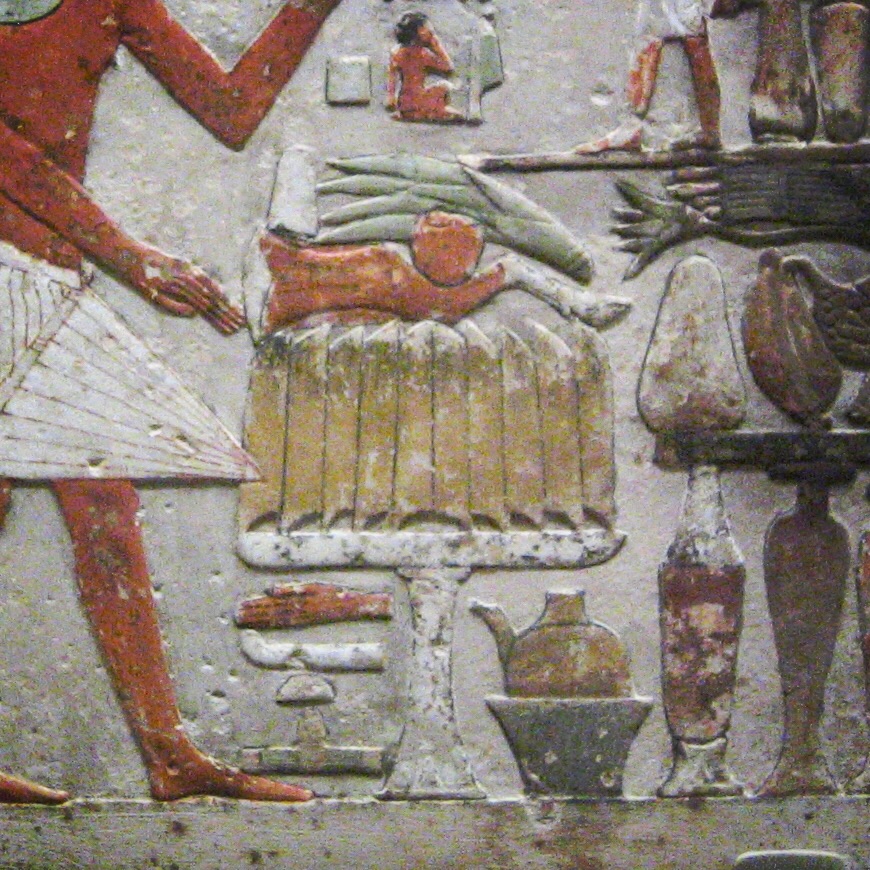
As citizens, immigrants, and perhaps some First Nation people sit down across the country, give thanks over an overflowing centerpiece of abundance, and celebrate Thanksgiving for the harvest, we pause to consider one of the earliest attested parallels to our concept of the cornucopia from Ancient Egypt.
 Placed upon the feast table in this Middle Kingdom wall fragment from the tomb of Amenemhet now in the Art Institute of Chicago, we see a tidy row of what appears to be sliced bread (yes, the Ancient Egyptians invented sliced bread) amidst a plethora of food and drink: ox leg, leeks, beer, wine, fowl…
Placed upon the feast table in this Middle Kingdom wall fragment from the tomb of Amenemhet now in the Art Institute of Chicago, we see a tidy row of what appears to be sliced bread (yes, the Ancient Egyptians invented sliced bread) amidst a plethora of food and drink: ox leg, leeks, beer, wine, fowl…

Notice, though, that the slices of bread taper at the tops to nifty little points and the bottoms are curved to taper similarly to single points engaging with the offering table. Unless we can also credit the Egyptians for inventing Italian panettone, I’m not sure that’s entirely expected of sliced bread.
What we have here is the beautiful interplay of word and image. A hybrid of Egyptian hieroglyphs and pictorial art. Sitting upon the table is not a representation of sliced bread, but Egyptian hieroglyphs depicting flowering reeds. Phonetically it approximates our letter “i” or “j,” but in the context here at functions as an ideogram instead of a phonogram…that is, as an idea instead of a sound. The idea of the flowering reed is a veritable cornucopia of all the fruit of the fields placed upon the offering table of Amenemhet. It’s symbolic value will stand in place of the literal, physical food offerings placed at the tomb by Amenemhet’s descendants and contracted priests, nourishing the deceased in perpetuity forever after.
… The Ancient Egyptian cornucopia.

The “loaves” are not the hieroglyph for reed. The reed hieroglyph has its pointed shaft base on the same side as the top of the arch of the pictogram. I’ve been confused about the true meaning of these “loaves” and would welcome a better explanation. The hieroglyph for bread is a triangular shape and also does not correspond. The original interpretation of these representing bread is by Griffith. One can usually understand Egyptian representational figures fairly easily (eg leg of steer, birds) but these don’t look at all like any bread i’ve ever seen. These are always shown as an even number with half pointing one way and half the other.
Thanks for the comment. I welcome an alternative interpretation, if you have it. Not all offering scenes represent the reed on the table. Just as often it’s actually meant to represent bread. See, for example, the offering scene from the tomb of Thenti, which I show in episode 2 of the podcast. Notice there that the “slices” are flush with the table, not tapered as with the flowering reed. Also, Thenti’s bread slices alternate in direction, depicting four complete loaves (cut in half) bookended by half loaves. Loaves of bread in Egyptian art and inscriptions take a variety of forms. The object to the right of the table may be a tall conical loaf. A somewhat diamond-shaped loaf appears in the “htp” sign in the inscription at top both in the middle and far right. The hieroglyphic “t” loaf is commonly represented as a half circle. That said, best of luck dismantling the Big Loaf Conspiracy!